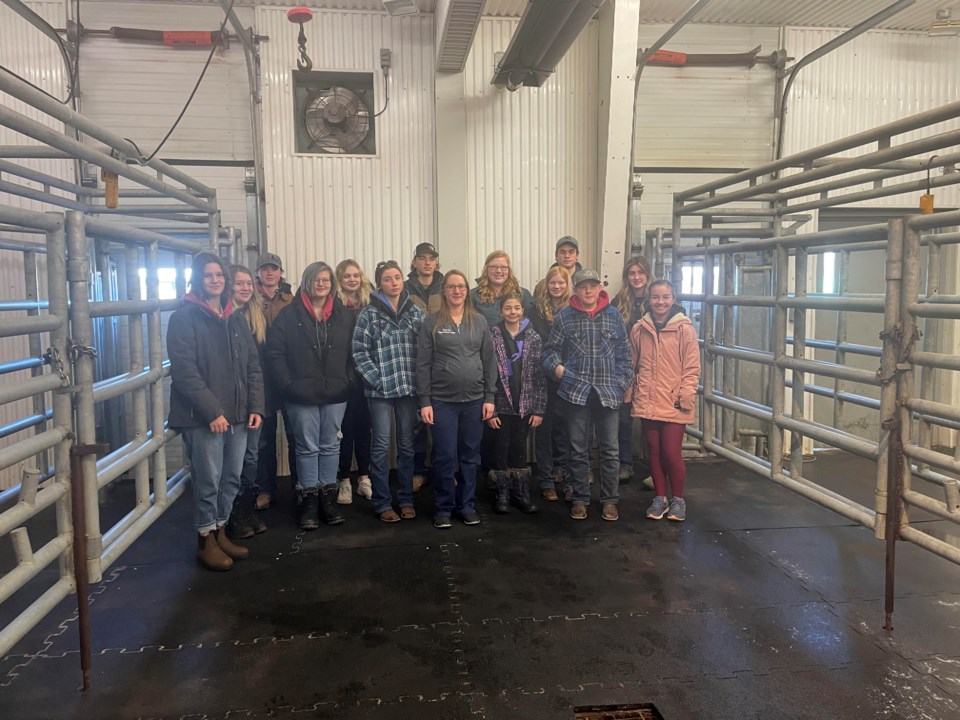ELK POINT - The Elk Point Beef Club got to go on a field trip on Jan. 6. We left Elk Point on a bus at 10 a.m., off to Vermillion. Our first stop was the Vermilion Veterinary Clinic.
Our tour guide, Jessie, is one of the registered vet technicians. She completed the two-year course at Lakeland College. Jessie toured us around the small and large animal facilities. They perform many different kinds of services at their facility.
We stopped for a quick lunch break and then headed over to the Vermilion Lakeland College for a tour of the dairy barn, beef barn, and the animal health clinic. All of these are two-year student managed programs and have the option for students to move into university programs.
The dairy barn has about 70 dairy cows. They have two different ways they milk, split about half and half on each method. The first way they showed us is to take them twice a day, morning and then night, sixteen cows at a time into the milking parlour, where the students wash and manually hook up each cow to their station. It takes about two hours to milk all the cows, getting about 30L per cow. The other milker is a robot.
The cows are trained to walk into the milking chute, where their tags get scanned so the farmers/students know how often the cows are coming in to be milked, cows on this system average 38L a day. The ideal milking cycle is 305 days; they stop milking about 60 days before calving, and start three days after calving for a cow, and four days after for a heifer. The cows get about half an hour with their calf so the cows can lick them clean and get their colostrum going then are separated.
The calves get bottle fed for about 7-10 days, after that time is up they go out to a 72-day auto feed milk replacer. The dairy barn's way of feeding is by a robot, the robot goes and detects every hour how much food is in the bunk and determines whether or not it needs to make more feed.
The beef barn is a cow/calf program with three different herds, a purebred Angus herd of 50 cows, a commercial herd of 100 cows, and a grazing herd that has 70 cows. The purebred and commercial herds start calving around Jan. 12. The grazing herd calves around May 1. Students get to learn hands-on how to care for the cow/calf pairs from calving to weaning.
In the animal health clinic there are 72 students in this program. They have an anatomy lab where they get to do “dirty” labs, and a research lab where they do “clean” labs. The clinic has two kennel rooms, enough for 12 dogs and 12 cats. We also got to see the equine and bovine areas where they research and learn hands-on how to work with the animals.
When we were done we all headed out for a nice dinner then went for some neon bowling to end off our night. We had a very fun, informative day and enjoyed the fascinating experience.
Farm tour
The Elk Point 4-H beef club had their farm tour on Jan. 15. We went and toured everyone's farms and looked at their projects.
We collected samples of the feed from different farms and compared the way the feed looks, feels, and even smells. The Beef leader, Dennis Kotowich, gave us a demonstration on how a calf should be born and how to pull a calf. After the farm tour we had a short meeting and had supper together.



